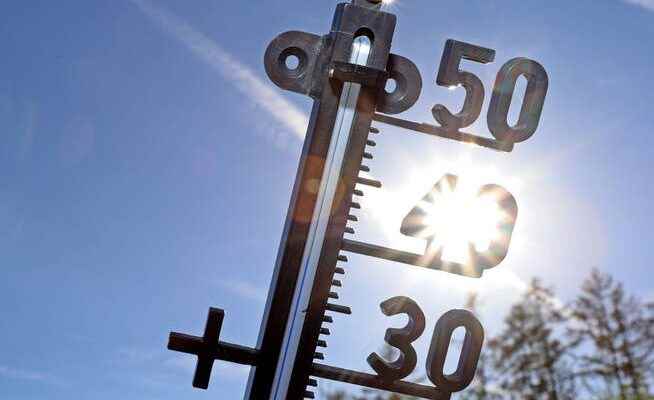With an average annual temperature of over 7 degrees, the end of the year sets a record. The number of hours of sunshine and the lack of rain are also noticeable.
The thermometer reached highs this year.
Nothing with a white Christmas: On Christmas Eve, temperatures of up to 10 degrees are expected in Zurich. It’s an ending befitting this year. 2022 was the warmest and regionally sunniest year that Switzerland has experienced since measurements began in 1864. This is shown by figures from Meteo Switzerland.
With an average nationwide annual temperature of 7.4 degrees, a clear high was set. Never before had this average exceeded the 7 degree mark. The year 2022 thus continues the trend of recent years – the seven warmest years since measurements began were all recorded after 2010.
It was already apparent in the first few months that there could be a warm year. The second mildest winter since 1864 was measured on the southern side of the Alps, followed by the fourth mildest spring nationwide. Several measuring stations registered the warmest May in history.
Only the hot summer of 2003 was even warmer
The summer didn’t come up with any surprises either. With maximum values of over 36 degrees, there was a heatwave every three summer months of June, July and August. With 14 hot days in a row (daily maximum of at least 30 degrees), Lugano even registered the longest sustained hot period since measurements began. Only the legendary record summer of 2003 delivered more heat on average.
The end of the year was similar to how it began: October was record warm and November was warmer than average, resulting in the third warmest autumn since measurements began.
Lots of sun, little rain
However, 2022 will not only go down in the record books because of the heat. The course of the year was also characterized by a lot of sunshine. Three of the four measuring locations – Geneva, Basel and Zurich – registered the sunniest year since measuring began.
The measurement site in Geneva is particularly striking. The difference to the second sunniest year is more than 150 hours of sunshine.
Where there is a lot of sun, little rain falls. On the southern side of the Alps, precipitation in all four seasons was below the average for the years 1991 to 2020. Overall, 2022 went down in the history books as one of the ten years with the least precipitation since measurements began.
As a result of the persistent drought, several forest fires broke out in the cantons of Bern, Ticino and Valais in the spring. The largest forest fire raged from 23 to 25 May in Ticino’s Centovalli. The fire covered an area of around 50 hectares. Only the seven Super Pumas of the Swiss military that were deployed brought precipitation.
